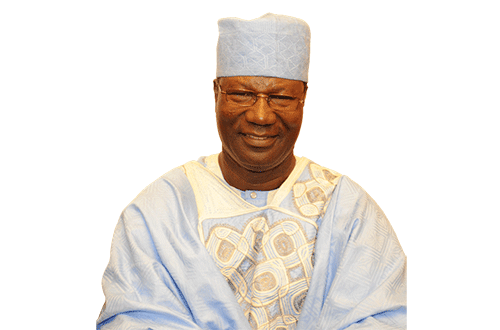Recent sea-level variations and trends along the coast of Africa are primarily estimated with tide gauge records. However, the significant spatial and temporal gaps in the African tide gauge records limit the ability to monitor and understand sea-level observations as well as the driving mechanisms that underpin sea-level variations in the coastal zone. Global mean sea levels have risen faster in the 20th century than in any prior century over the past 3 000 years. “Rising seas mean a rising tide of misery,’’ said United Nations chief Antonio Guterres, speaking at a summit that placed sea-level rise at the top of the international agenda at the UN General Assembly earlier this week.
Surging sea levels are creating “a rising tide of misery’’ that threatens the future of nearly a billion people who live in low-lying coastal areas, the United Nations chief has warned, as they become increasingly vulnerable to storm surges, coastal erosion, and flooding.
Since the beginning of the 20th century, the global mean sea level has risen faster than in any prior century over at least the past 3 000 years.
The National Aeronautics and Space Administration (NASA) says as global temperatures have risen about one degree Celsius (1.8F), sea levels have gone up 160 to 210 millimetres (six to eight inches,) with about half of that amount occurring since
1993.
Guterres warned of “communities swamped, freshwater contaminated, crops ruined, infrastructure damaged, biodiversity destroyed and economies decimated – with sectors such as fisheries, agriculture and tourism pummeled’’. According to the World Meteorological Organisation, the average sea level globally reached a record high last year.
The UN reported that the rate of increase over the last decade is more than twice the rate of sea level rise in the first decade of the satellite record, from 1993 to 2002. “The primary cause of sea-level rise is human-induced climate change. Melting land ice and the expansion of seawater as it warms, are the main drivers of rising waters around the world,’’ Ryan Hobert, associate vice president for climate and environment at the UN Foundation, told Al Jazeera.
“The ocean is actually one of our biggest allies in the fight against climate change. It absorbs excess heat that is released into the atmosphere. But the problem is that as water heats up, it expands, which scientists say is responsible for nearly half of the sea-level rise we’re seeing.’’
Last month, Guterres said “The ocean is overflowing’’ and it was “a crisis entirely of humanity’s making.’’
The UN says one out of every 10 people live close to the sea. It also pointed out that people living near the coast in countries including Bangladesh, China, India, the Netherland, and Pakistan “will be at risk and potentially suffer catastrophic flooding’’.
Also at risk are cities like Bangkok, Buenos Aires, Lagos, London, Mumbai, New York and Shanghai. Pacific islands face growing threats to their economic viability and even existence.
Small islands with low-lying land areas are arguably facing the most critical threats. Sea-level rise and other climate effects are already forcing people in such Pacific Ocean nations as Fiji, Vanuatu, and the Solomon Islands to relocate.
According to a study cited by the IPCC, the Maldives, Tuvalu, the Marshall Islands, Nauru, and Kiribati may become uninhabitable by 2100, creating 600 000 stateless climate refugees. “The first and most important way to stop rising sea levels is to curb global greenhouse gas emissions,’’ Hobert added.
For Small Island Developing states – especially low-lying islands in the Pacific like the Marshall Islands and Tuvalu – no issue is more pressing or consequential. Sea-level rise not only threatens to destroy their livelihoods and cultures but also their very existence on the map. “We will need to invest in climate adaptation and resilience.’’ Flooding has increased soil salinity, reduced crop yields, and weakened trees.
Infrastructure, such as roads and powerlines have been washed away. The UN has also warned that the effects of saltwater flooding can range from damage to coastal habitats, fish stocks, agricultural lands as well as infrastructure, and can impact the ability of coastal communities to sustain their livelihoods. In addition, the world body says “Flooding can contaminate freshwater supplies, promote waterborne diseases, and lead to stress and mental health problems.’’
Under-threat countries whose main source of income is tourism can also suffer damage to beaches, resorts and coral reefs. In Dar es Salaam, the response to sea-level rise and flooding has been focused on restricting construction in flood-risk areas to reduce the spread of vulnerable informal settlements.
To do so, property rights in less vulnerable areas have been formalised to incentivise families to evacuate flood-prone neighbourhoods. Through regularisations, the city can provide basic infrastructure services such as water supply, stormwater drainage, public toilets, waste collection points, and transport links.
Ensuring that communities become more resilient can be a moving target, though. Relocated households in Dar es Salaam sometimes sell their formalised properties in the upgraded, climate safe areas, and move back to their neighbourhoods of origin. The older neighbourhoods may be riskier but have other benefits, such as being located closer to the city centre where connections to markets, hospitals and businesses are better.
When Dar es Salaam attempted to upgrade certain at-risk areas with better stormwater drainage, road infrastructure, public toilets, and lighting as well as a better police presence for security, through the Community Infrastructure Upgrading Project, property values went up.
The rise, in turn, fueled urban gentrification. The experience in Dar es Salaam shows that finding solutions to climate impacts and pressing housing needs is not easy. It requires a continuous conversation with affected communities to better understand and meet residents’ expressed needs.
*Dr Moses Amweelo is a former Minister of Works, Transport, and Communication. He is currently a part-time lecturer at IUM and UNAM. He earned a doctorate in Technical Science, Industrial Engineering and Management from the International Transport Academy (St Petersburg, Russia).


